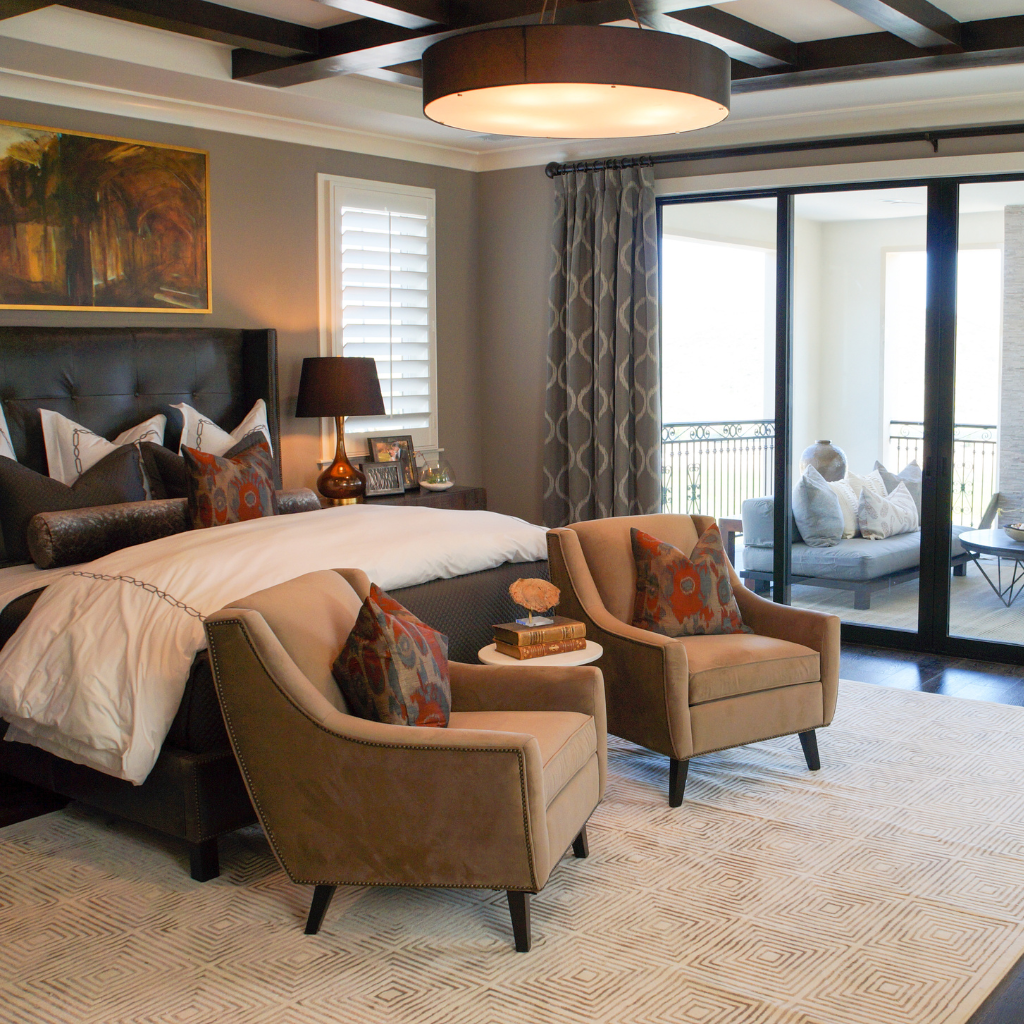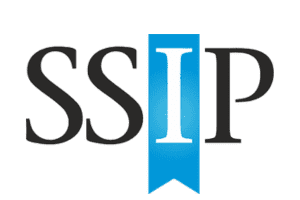Transforming a garage into a bedroom masterfully combines aesthetics and functionality, elevating the home’s comfort and value while adhering to building regulations. This conversion maximizes living space efficiently by prioritizing natural light through large windows, employing multifunctional furniture, and ensuring year-round comfort with high-quality insulation. Utilizing soft lighting and gentle color schemes enhances the room’s tranquility. The article further explores how these elements harmonize to create an enchanting and practical new living area.
Key Takeaways
- Install floor-to-ceiling windows and skylights to enhance natural light and make the space feel larger.
- Use multifunctional furniture to optimize space and maintain functionality.
- Incorporate high-quality insulation in walls, floors, and ceilings to ensure year-round comfort.
- Choose soft, ambient lighting and strategically placed mirrors to create a spacious and inviting atmosphere.
- Plan the layout to include ample storage solutions, utilizing vertical space to reduce clutter.
How to Plan Your Garage Conversion Project?
Planning a garage conversion into a bedroom involves several critical steps, including obtaining permission, each demanding careful consideration to balance aesthetics with functionality.
The design process should prioritize creating a comfortable, efficient space that meets the specific needs of its occupants, focusing on elements like lighting, storage, and privacy.
Additionally, understanding the full spectrum of conversion costs—from materials to labor—ensures that the project stays within budget while achieving the desired outcome.
What are the Key Steps to Convert a Garage
Starting a garage conversion requires meticulous attention to detail and a well-thought-out plan to guarantee seamless functionality and aesthetic integration with the existing home. For homeowners looking to transform their garage into extra living space, particularly a bedroom, understanding the key steps involved is crucial.
| Step | Description |
| Obtain Planning Permission | Consult with local authorities to verify compliance with building regulations. |
| Hire a Garage Conversion Specialist | Engage experts to assess structural integrity and design feasibility. |
| Plan for Functional and Aesthetic Elements | Choose materials that complement the home and meet functional needs, such as insulating garage floors. |
Each phase, from obtaining permissions to the final touches, should be managed by a professional to minimize garage conversion costs and enhance the value of the converted garage.
How to Design a Functional Bedroom
After outlining the foundational steps necessary for a garage conversion, attention shifts to the interior design of the new bedroom space.
When converting a garage into a bedroom, it’s imperative to consider the garage’s existing floor and main structure, assessing whether they are structurally sound enough to support a comfortable, habitable room. Not all garages are immediately ready for conversion, so proper inspection and reinforcement may be required.
Strategic design choices can transform a simple garage into a garage bedroom conversion that adds functionality and aesthetic appeal. Whether converting a tandem garage or a single unit, creating a large bedroom is possible with clever layout planning and an understanding of the available internal dimensions.
Make sure that every element, from lighting to storage, is meticulously planned to maximize the usability of the space as an additional living space. Hiring electricians and a plumber early will ensure that all necessary electrics and plumbing installations meet the same standards as the rest of your home.
Incorporating smart, multifunctional furniture and an optimized layout is essential in making the space feel open and comfortable. For example, using built-in wardrobes or fold-away beds can significantly enhance space efficiency, especially if only half the garage is used for the conversion.
Garage conversions into living spaces are popular in many local areas, offering homeowners a practical way to expand without needing full extensions. In addition to adding usable space, these renovations can increase your property’s value when done correctly.
Don’t forget to evaluate other options, such as connecting the new bedroom to an outdoor space to improve ventilation and natural light. Ensuring the room is suitable for long-term use as a bedroom is critical, and often, the answer lies in careful planning and professional guidance.
Such thoughtful planning guarantees a seamless changeover from a garage to a bedroom, enhancing your home’s comfort and usability.
What are the Conversion Costs
Understanding the financial implications is essential when beginning a garage conversion project. Careful budgeting ensures a successful outcome, whether aiming for a garage-to-bedroom conversion or creating a broader garage-conversion living space.
Here’s a detailed breakdown of the costs involved:
Initial Assessment and Planning: Engage a builder or architectural professional to develop detailed plans and handle permits. This stage typically ranges from $1,500 to $3,000. Though it may seem like an added expense, it’s a cost-effective way to ensure the project complies with local regulations and transitions smoothly from garage to habitable space.
Construction Costs: The total cost of converting a garage can vary depending on location, the existing structure, and your design choices. On average, expect to spend between $20,000 and $50,000. Extra costs can accumulate quickly if you’re in a premium area or plan to include structural changes—like adding a brick wall or expanding the footprint. However, in some places, converting a garage may be cheaper than building a full extension, making it a financially sensible choice for adding square footage.
Interior Finishing and Furnishing: Expect to spend between $2,000 and $5,000 for aesthetic upgrades and comfort. This includes fixtures, flooring, paint, and potentially white goods like a mini-fridge or washer if the space will serve multiple functions. Selecting the right finishes enhances everyday comfort and can also boost your home’s resale value down the line.
Remember that labor costs will form a significant part of your budget. Depending on the scale of the work, some contractors may charge a flat fee, while others work hourly. Discussing this in detail with your builder to avoid surprises is important.
Ultimately, converting your garage is not just about saving money—it’s about adding usable living space smartly and stylishly. Whether you’re after an additional bedroom, office, or guest suite, the right investment can transform your garage into a valuable and livable part of your home.
How Does a Garage Conversion Add Value to Your Home?
Transforming a garage into an additional bedroom not only enhances the aesthetic appeal of a home but also boosts its functional space, potentially increasing its market value and influencing the overall garage conversion price.
Carefully considering the design elements and finishes can markedly elevate the overall allure and usability of the new room. Whether you’re aiming for an en suite, a spacious master, or simply a bit more space for guests or family, thoughtful planning makes all the difference.
To maximize the added value, homeowners should focus on integrating features that align with current market trends and buyer preferences. For example, adding new windows improves natural light and ensures the garage as a bedroom feels like a true extension of the rest of the house.
Hiring a good builder is crucial to ensure the conversion is up to standard. Costs can vary depending on the jobs involved—such as plumbing for a bathroom, installing radiators, or choosing high-quality fittings. You’ll also need to consider other things like insulation, flooring, and electrical work.
Before you start work, it’s important to submit your garage bedroom conversion plans to local authorities—especially if you’re in a conservation area where additional permissions might be needed. The presence of a basement below or the unusual shape of the garage might also determine how the conversion proceeds.
Deciding whether to knock through to the main house or keep the new room separate depends on your long-term goals. Some families keep it distinct for privacy, while others prefer to integrate the space for a more cohesive layout.
Converting a garage can be more involved than it first appears. Even minor details like door thresholds, wall finishes, or whether the walls are prone to scratch or wear can affect the result. But with proper effort, the complete transformation adds long-term value and practical benefit to the rest of your home.
Measuring the available square footage accurately and planning storage solutions ensures the room feels spacious and comfortable. Ultimately, when well-executed, a garage bedroom conversion can turn underutilized space into one of the most valued rooms in the home.
Does Adding an Extra Bedroom Increase Home Value
Converting a garage into an extra bedroom not only caters to the aesthetic appeal of a home but also greatly enhances its market value, provided that it meets building regulations approval.
This transformation is particularly important in garage conversion in the UK, where maximizing property value through cost-effective methods is highly prized.
- Increased Property Value: Future buyers often perceive the extra space as valuable, raising the overall property value considerably.
- Cost-Effective Solution: Compared to traditional house extensions, converting a garage to a habitable room is a more budget-friendly building project.
- Attractive to Buyers: This newly converted space appeals to potential buyers looking for a functional design that smartly incorporates additional living areas without an extensive new construction footprint.
How to Maximize the Garage Conversion Add Value
A well-executed garage conversion can greatly enhance a home’s market value by offering an additional, functional living area that appeals to a broad spectrum of potential buyers.
Transforming an existing garage into a new room, particularly through a double garage conversion, maximizes underutilized garage space.
Careful attention to the aesthetics of the existing garage door and the garage door opening, along with adherence to building regulations, can integrate the new design seamlessly with the home’s existing architecture, boosting curb appeal.
Ensuring the garage conversion adheres to building regulations approval not only enhances safety but also improves energy efficiency, which is highly valued in today’s market.
Ultimately, a garage conversion could increase the desirability and functionality of a property, making it a smart investment for homeowners.
How Do You Make the Space Comfortable Year-Round?
Creating a bedroom from a garage involves meticulous planning to guarantee comfort across all seasons.
Adequate insulation in the walls, floors, and ceilings is vital for maintaining a stable indoor temperature and enhancing energy efficiency.
To further refine the living experience, selecting ideal heating and cooling systems, as well as maximizing natural light and ventilation, are essential considerations.
What Insulation Is Needed for Walls, Floors, and Ceilings
To guarantee year-round comfort in a garage converted into a bedroom, meticulous attention must be paid to the insulation of walls, floors, ceilings, and loft insulation, along with ensuring compliance with building control. This involves aligning with building regulations for garage conversions and ensuring that all materials meet the specific needs of the existing structure.
- Walls: Install high-quality insulation materials that comply with existing building codes. Consider adding a damp-proof course to prevent moisture infiltration in a detached garage.
- Floors: For an existing concrete garage floor, add a layer of thermal insulation topped with a moisture barrier to enhance comfort and warmth.
- Ceilings: Incorporate loft or roof insulation to minimize heat loss, which is essential if the garage has a pitched roof structure.
What Heating and Cooling Systems Work Best
While guaranteeing the structural elements of a garage conversion are well-insulated is essential, selecting the appropriate heating and cooling systems is equally important for maintaining comfort throughout the various seasons.
For integral garages undergoing a conversion, incorporating a ductless mini-split system offers efficient temperature control, minimizing the need for extensive plumbing and electrical work, sometimes advised by a structural engineer. These systems are ideal as they do not require ductwork, which adheres to building control regulations and optimizes space.
Additionally, consider a wall installation with high thermal resistance when replacing the garage door to enhance fire safety and insulation.
How Can You Improve Natural Light and Ventilation?
How does one enhance the influx of natural light and secure proper ventilation in a converted garage bedroom? When tackling a garage-to-bedroom transformation, addressing lighting and airflow is crucial for long-term comfort and habitability. Here are three detailed strategies that meet necessary building standards and elevate the overall conversion of the garage to a bedroom:
1. Install Large Windows
Replace the garage door with large, floor-to-ceiling windows. This means maximizing natural light and significantly improving the aesthetic, transitioning the room from a utilitarian space to a bright, modern living area. If you hope to create a welcoming and stylish bedroom, this change has a huge impact. It’s a big job, so it’s advisable to contact a reputable company or architect early in the process to ensure structural feasibility and energy efficiency.
2. Add Skylights
Skylights are an excellent option, especially if wall space is limited or privacy is a concern. Adding them during your garage conversion to the bedroom can flood the space with daylight and promote natural ventilation. Some skylights can be opened, which helps air run through the room and prevents the space from becoming filled with stale air. This is particularly important if the room is being intended for daily use or sleeping.
3. Incorporate Ventilation Systems
In cases where adding windows or skylights is difficult—such as in terraced properties—you can alternatively use mechanical ventilation systems. Many homeowners use permitted development rights to install these without submitting a full planning application. However, it’s wise to inform your local council or a planning consultant, especially if the property is in a conservation area. Proper ventilation ensures air quality remains high and condensation doesn’t affect the new finishes or furniture.
When comparing your options, share your plans with professionals for a full comparison of cost and practicality. A well-ventilated and naturally lit room will improve the daily living experience and add to the property’s resale value.

Can You Do a DIY Garage Conversion
Undertaking a garage conversion requires a blend of skills, from basic carpentry to more complex electrical work, each vital for transforming a simple space into a functional bedroom.
The advantages of this approach often include cost savings and a personalized touch, while the downsides may involve unexpected challenges and extended timelines.
A careful assessment of one’s capabilities and resources is important before starting a project.
What Skills Are Needed to Convert Your Garage
Initiating a garage conversion into a bedroom requires diverse skills, blending creativity with precision. It may also involve consultations with the local authority, particularly when legal or structural complexities arise.
Whether converting a detached garage or adapting an existing structure into an ensuite bedroom, several capabilities are essential to ensure a smooth and compliant transformation:
Structural Knowledge
Understanding the architectural integrity of the existing structure is critical. You’ll need to review whether any load-bearing walls are involved and determine the size of the new space in relation to the overall property. In many cases, submitting a building notice is required, and consulting a surveyor or structural engineer is highly recommended.
This step ensures safety for garage conversions to bedrooms and prevents issues from arising long after the work is complete. By properly assessing the structure, you help guarantee that the converted area becomes a liveable room that adds real value. Whether you’re creating an extra room for guests or turning it into a valuable living space, attention to these details is key.
Keep in mind that labour cost can vary widely depending on the different jobs involved—from insulation and plastering to electrical work and flooring—so budgeting accurately is essential.
Insulation Proficiency
Knowing how to insulate a garage properly is key to achieving energy efficiency and year-round comfort. It’s not just about wall insulation—floors, ceilings, and even window selections must be carefully planned. Poor insulation can increase utility bills, making the project more expensive. By contrast, a well-insulated space will feel like any other room in the home, even in colder months.
Legal Acumen
Navigating deeds, zoning restrictions, and party wall agreements is crucial—especially when blocking the existing garage door. Every property is different, so it’s wise to determine what regulations apply to your case. For example, homes in conservation areas or listed buildings may face stricter planning controls. Moving ahead without compliance can result in costly setbacks.
When planning, looking at similar projects in your area is helpful to understand what has been successfully turned from a garage to a living space. A good contractor will walk you through your options, ensuring everything from legal paperwork to finishes is aligned with your goals.
While no two garage conversions are exactly the same, there is a variety of resources and professionals available to guide you through the process. Though not always easy, when done correctly, converting a garage into a bedroom can be a strategic and rewarding investment—often less disruptive and more cost-effective than moving.
What are the Pros and Cons of a DIY Garage Conversion
After exploring the skills needed to convert a garage into a bedroom, one might consider whether to undertake this project independently. A DIY garage conversion can be rewarding and economical, allowing a personalized touch to transform the space.
However, the challenges are significant. Integrated garages often require substantial structural alterations, including replacing the garage door with more insulated, wall-like materials. If the garage is too small, expanding the space for adequate living might necessitate complex remodeling that exceeds typical DIY skills.
In addition, converting a garage that is integrated into the home involves meticulous attention to the home’s aesthetic coherence and functional design, ensuring the new bedroom seamlessly blends with the existing architecture while complying with requirements set by the local council.
What are the Differences Between Attached and Detached Garage Conversions?
The distinction between attached and detached structures becomes pivotal when converting a garage into a bedroom.
An attached garage conversion often involves considerations of seamless aesthetic integration with the existing home, ensuring that the design harmonizes both internally and externally.
Conversely, a detached garage offers more flexibility in design and function but requires careful planning regarding access and utilities.
How Does an Attached Garage Conversion Differ
Converting a garage into a bedroom involves several nuanced differences depending on whether the garage is attached to the main house or stands alone as a detached structure.
Here are the distinctions for an attached garage conversion:
- Permitted Development Rights: Often, an attached garage conversion may not require full planning permission from the local planning authority, as it is considered part of the existing main house structure.
- Integration with Main House: The conversion typically involves more seamless integration regarding aesthetics and utilities, enhancing the overall flow and functionality of the home.
- Damp Proofing Needs: Given its proximity and connection to the main house, ensuring proper damp proofing is essential to protect the new living space and the existing structure from moisture-related issues.
What to Consider for a Detached Garage Conversion
While an attached garage conversion benefits from existing connections to the main house, a detached garage presents unique challenges and opportunities for transformation into a bedroom.
When considering converting a detached garage, owners must evaluate the need for utility extensions such as plumbing and electricity, often requiring consultation with a building control officer. The type of garage dictates zoning restrictions and potential permits needed from the local planning office, especially if the structure is a listed building.
Consent may be needed to modify external appearances. Homeowners wanting to convert their garage should also consider keeping the existing garage door for aesthetic integration or replacing it with more conventional walls to optimize insulation and security, balancing storage space and parking space needs with living functionality.
What Are the Best Ways to Finish and Decorate the Space?
When transforming a garage into a bedroom, selecting the right flooring and wall materials is essential for creating a warm, welcoming atmosphere. These foundational elements set the tone for the entire space and should be chosen carefully to suit both function and comfort.
Thoughtful choices like soft, plush carpeting or warm wooden floors, combined with soothing, textured wall finishes, can greatly enhance the room’s coziness in the garage-to-bedroom conversion. This is a great place to start if you’re exploring ideas for garage-to-bedroom conversion. Early on, one of the most important things to confirm is what kind of services—such as underfloor heating or insulation—may be required to support your design choices.
Strategic decorating techniques, particularly in small spaces, can include the use of mirrors to expand the perceived space and soft lighting to add a serene, inviting feel. It’s a good idea to speak with an architect or interior designer to learn how to optimize light and layout in what was once a functional garage.
If you’ve bought a new property and are planning a conversion, get multiple quotes for flooring, plastering, and decorating. Prices can vary depending on your chosen materials and finish, so it’s wise to get advice before purchasing.
And don’t forget one of the most completely transformative elements—wall color. Choosing soft, neutral shades can make the room feel larger and more tranquil, while feature walls or textured panels can add personality without overwhelming the space.
These tips can help turn any cold, concrete-floored garage into a cozy, stylish bedroom that feels like an integral part of the home.

Which Flooring and Wall Materials Create a Warm Feel?
Choosing the right materials is essential for creating a warm atmosphere in a space originally designed for vehicles. Here are three key elements to take into account:
- Flooring: Opt for engineered hardwood or thick, plush carpeting. These materials provide excellent insulation and add a visually warm element to the floor, which is vital in most garage conversions.
- Wall Materials: Soften the harsh concrete walls typical in single garages using insulated drywall covered with warm-toned paint or elegant wallpaper. This adjustment is not only aesthetically pleasing but also functional, helping to maintain a comfortable temperature.
- Ceiling Treatments: Adding architectural elements like wood beams or coffered ceilings can elevate the overall aesthetic and warmth of the room, making the converted space feel less like part of the garage and more like an integral part of the home.
How Do You Make the Room Feel Cozy and Inviting?
To transform a garage into a cozy and inviting bedroom, careful attention must be paid to the finishing touches and decorative elements.
Many garage conversions to bedroom projects overlook the importance of a harmonious design that integrates both aesthetic appeal and functionality. When considering whether a garage conversion is right for your home, factor in all the costs necessary to create a warm ambiance, such as proper insulation and high-quality lighting.
Soft furnishings and strategic color choices can dramatically influence the room’s comfort level. Additionally, you’ll need to check your insurance to guarantee coverage during and after the conversion process, ensuring peace of mind as your garage is transformed into a truly livable space.
What Decorating Tricks Work Best in Small Bedrooms?
While transforming a small garage into a bedroom, clever decorating tricks can optimize the space aesthetically and functionally.
Here are three effective strategies:
- Use Multifunctional Furniture: Opt for pieces that serve multiple purposes, such as a bed with built-in storage drawers or a fold-down desk. This minimizes clutter and maximizes usable space.
- Implement Light and Neutral Colors: Lighter tones make the room feel larger and more open. Use shades like soft whites, light grays, or pastels to enhance the sense of space.
- Incorporate Mirrors Strategically: Placing mirrors to reflect light can visually expand the room. Position them across from windows or in dark corners to brighten the space and create an illusion of depth.
Conclusion
In summary, transforming a garage into a bedroom offers a blend of aesthetic appeal and functional design, and it’s important to consider the overall garage conversion price. By carefully planning the conversion and properly addressing each phase—such as insulation, electrical work, and suitable flooring—homeowners can create a comfortable, year-round living space that enhances property value.
Whether choosing a DIY approach or seeking professional help, attention to detail in finishing and decorating is essential. For garage conversion bedrooms, ensuring quality in materials and craftsmanship makes the space feel like a true extension of the home.
Before getting started, it’s also worth checking if you need planning permission, as regulations vary depending on location and the scope of work. In some cases, you may require approval, especially if the conversion alters the property’s external appearance or if you’re adding plumbing for an en suite.
This type of project not only optimizes underutilized space but also reflects personal style, making it a smart, tailored addition to any home.















